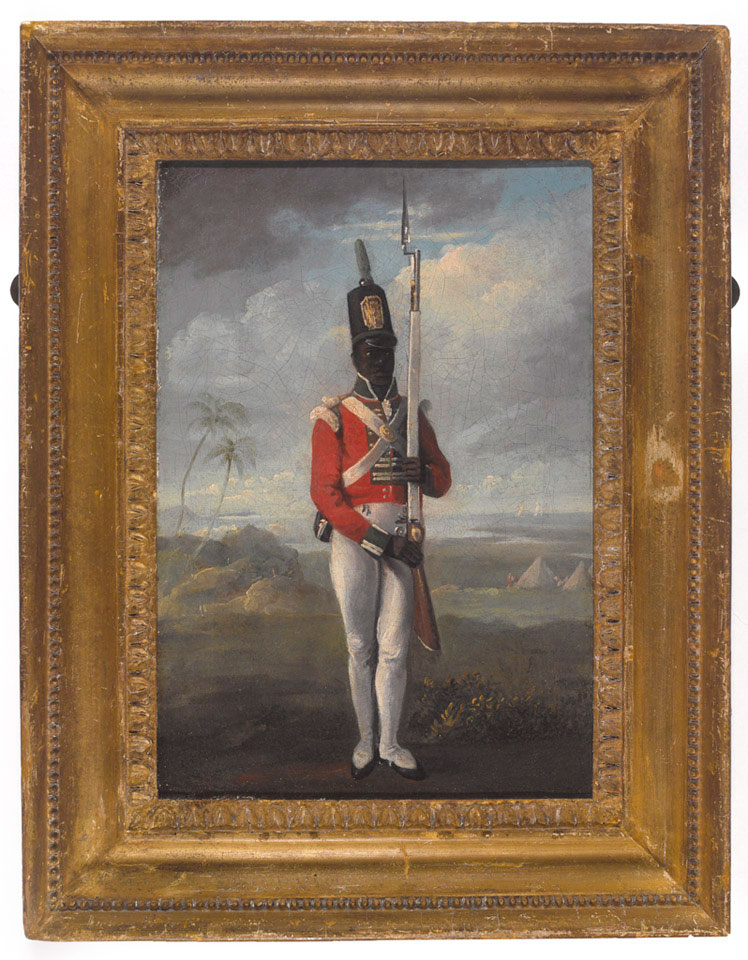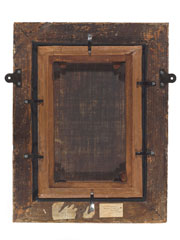
Online Collection
« Prev - 1 of 1 results - Next »
A private of the 8th West India Regiment, 1803 (c)
Oil painting on canvas, artist unknown, 1803 (c).
This historically significant portrait depicts a private soldier of a light company of the 8th West India Regiment.
As the British Empire grew, more soldiers were needed to garrison new territories coming under British control. The requirement for men was also increased by the wars with Revolutionary and Napoleonic France that soon spread to the Caribbean colonies of the European powers.
The tropical climate of the Caribbean took a toll on European soldiers. In 1795, the high mortality rate led the Army to raise the West India Regiments, enlisting black soldiers for service in the region in the belief that they would be better suited to the climate.
Local recruitment in the Caribbean was insufficient and so the ranks of the new regiments were filled with Creole and African slaves, purchased from West Indian sugar plantations or direct from slavers. Between 1795 and 1807 estimates suggest 13,400 slaves were purchased for the West India Regiments.
Elements of the 8th West India Regiment, stationed at Fort Shirley on the island of Dominica, rose in revolt on 8 April 1802. The regiment's white officers were killed or driven out of the fort. The mutiny was quickly suppressed with around 100 mutineers killed by a relief force of soldiers, militia and marines. Several ringleaders were either executed or flogged. The 8th West India Regiment was disbanded as a result of the mutiny, with the surviving soldiers transferred to other units. Reorganisation of the West India Regiments in 1803 led to the re-establishment of the 8th West India Regiment.
In the Court of Inquiry into the mutiny Governor Andrew Cochrane-Johnstone (1767-1833), who was also Colonel-in-Chief of the Regiment, was alleged to have withheld pay and used the soldiers as cheap labour to clear land. Rumours of disbandment and a return to slave status was deemed to have been the key reason for the rising. Cochrane-Johnstone lost his post and was recalled to England. He was however acquitted of all charges relating to the mutiny at his court martial at the Royal Hospital in March 1805.
NAM Accession Number
NAM. 2018-07-13-1
Acknowledgement
Purchased with the assistance of the Art Fund.

Copyright/Ownership
National Army Museum, Out of Copyright
Location
National Army Museum, Global Role gallery
Object URL
https://collection.nam.ac.uk/detail.php?acc=2018-07-13-1



